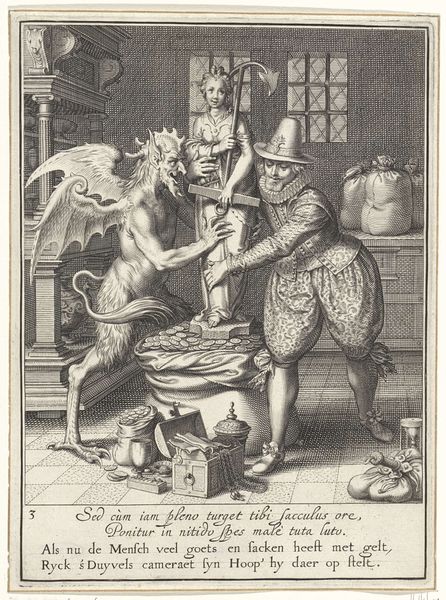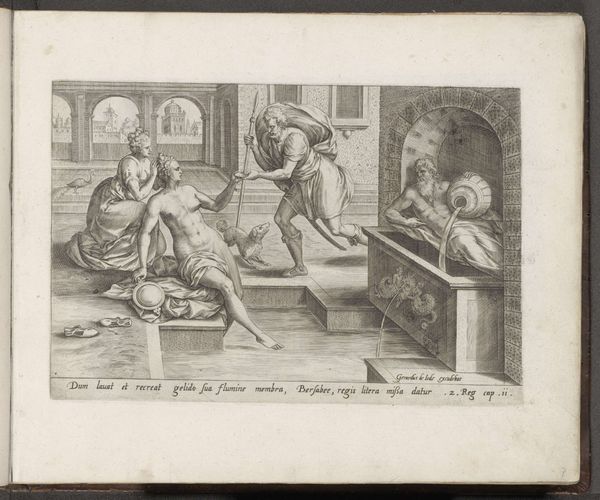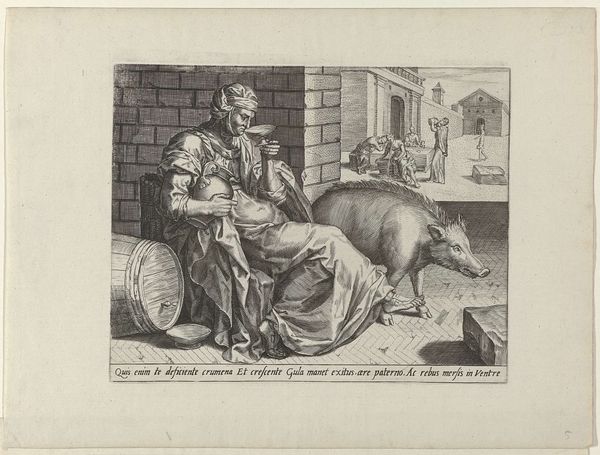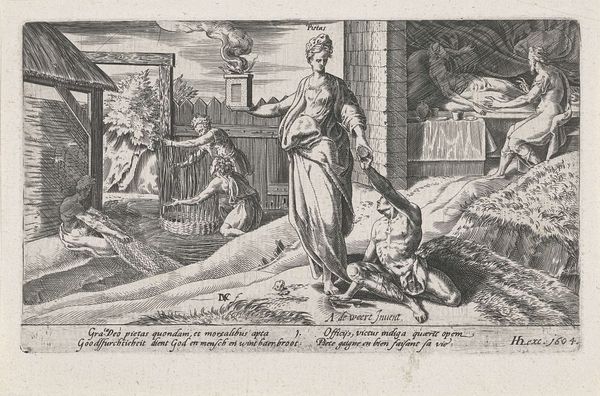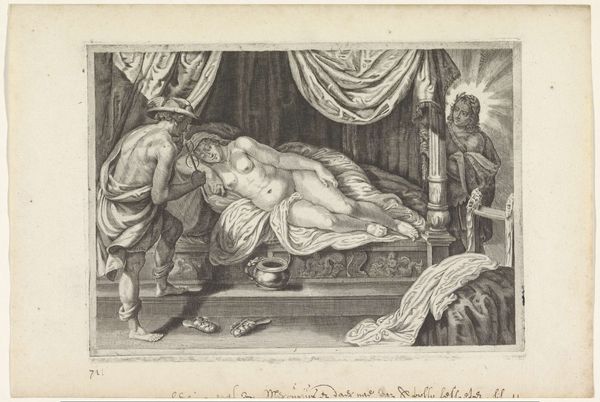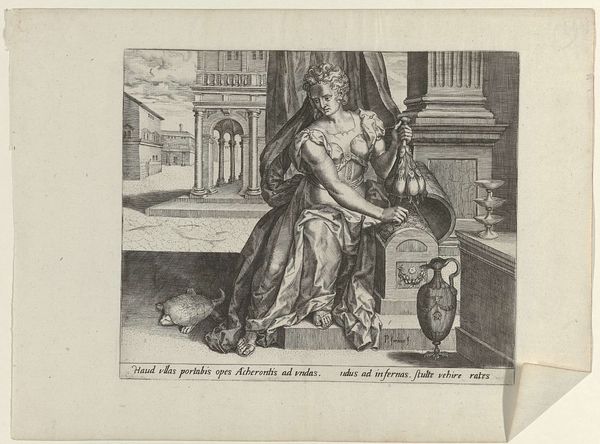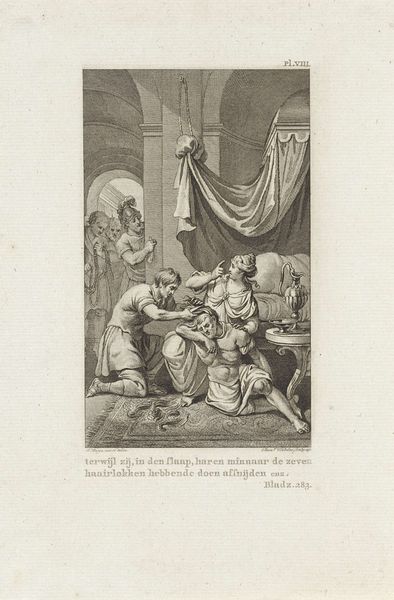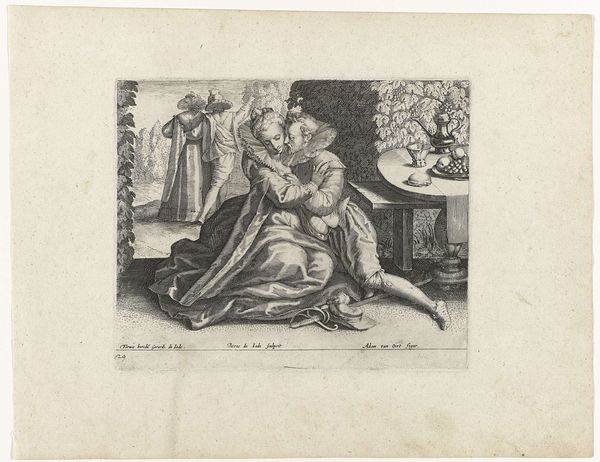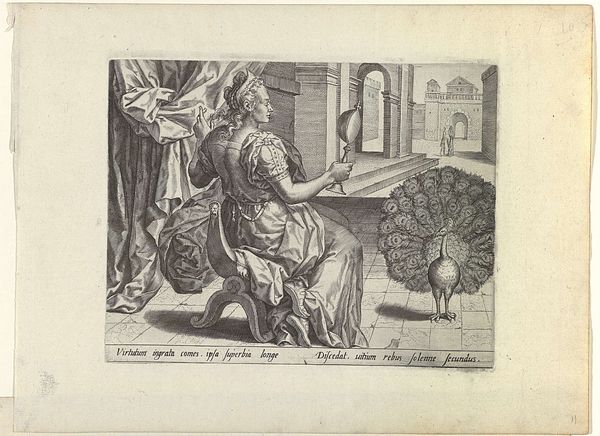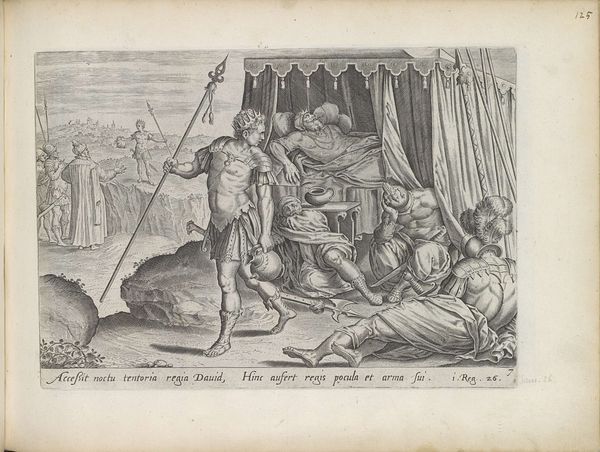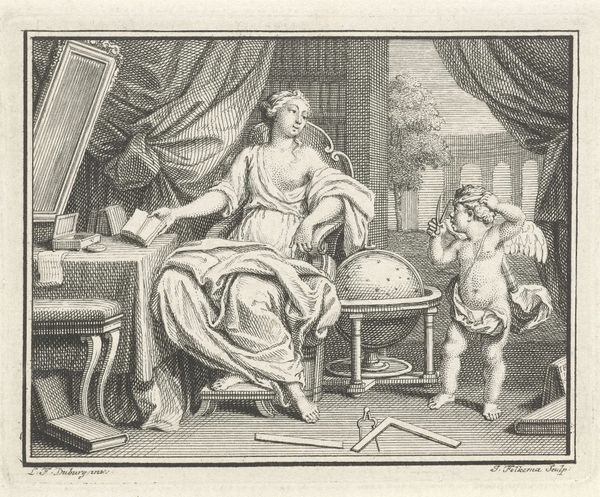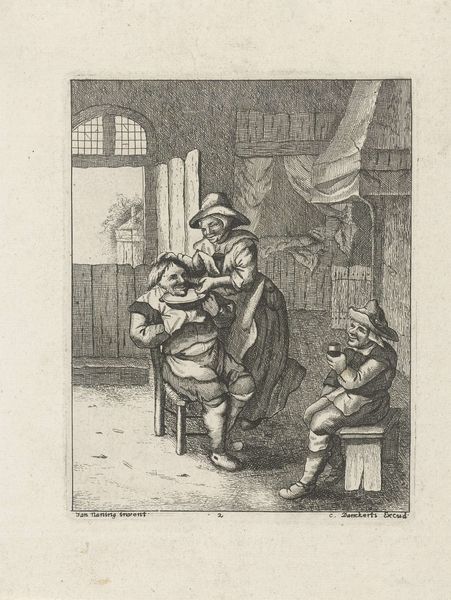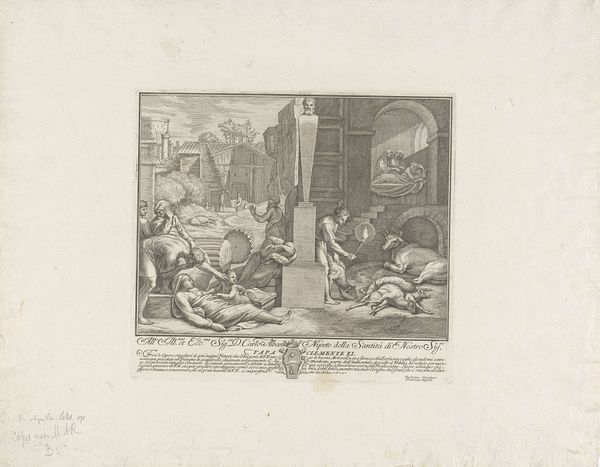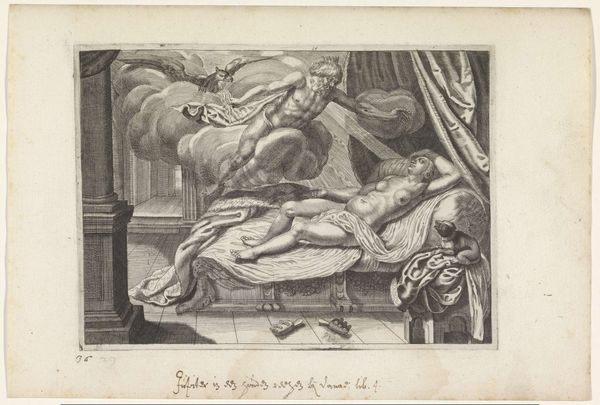
Dimensions: height 211 mm, width 256 mm
Copyright: Rijks Museum: Open Domain
Pieter Jalhea Furnius created this engraving, titled 'Luiheid', which translates to 'Laziness' or 'Sloth', sometime between 1545 and 1610. During this period, the Netherlands was undergoing significant social and political upheaval, including the rise of Protestantism and a growing merchant class. The image depicts a woman reclining with a donkey beside her, both embodying the concept of idleness. In a patriarchal society, representations of women often oscillated between the saintly and the sinful. Here, the woman’s languid posture and revealing clothing challenge prevailing notions of feminine virtue and industriousness. The presence of the donkey, an animal often associated with stubbornness and a lack of motivation, amplifies the theme of sloth. The deliberate juxtaposition of classical elements, like the column, with the blunt reality of the unkempt woman and the apathetic donkey creates a sense of tension. This tension invites reflection on the relationship between idealized virtues and the often-uncomfortable realities of human nature. The engraving prompts us to consider the societal expectations placed on individuals, particularly women, and the consequences of deviating from these norms.
Comments
No comments
Be the first to comment and join the conversation on the ultimate creative platform.
